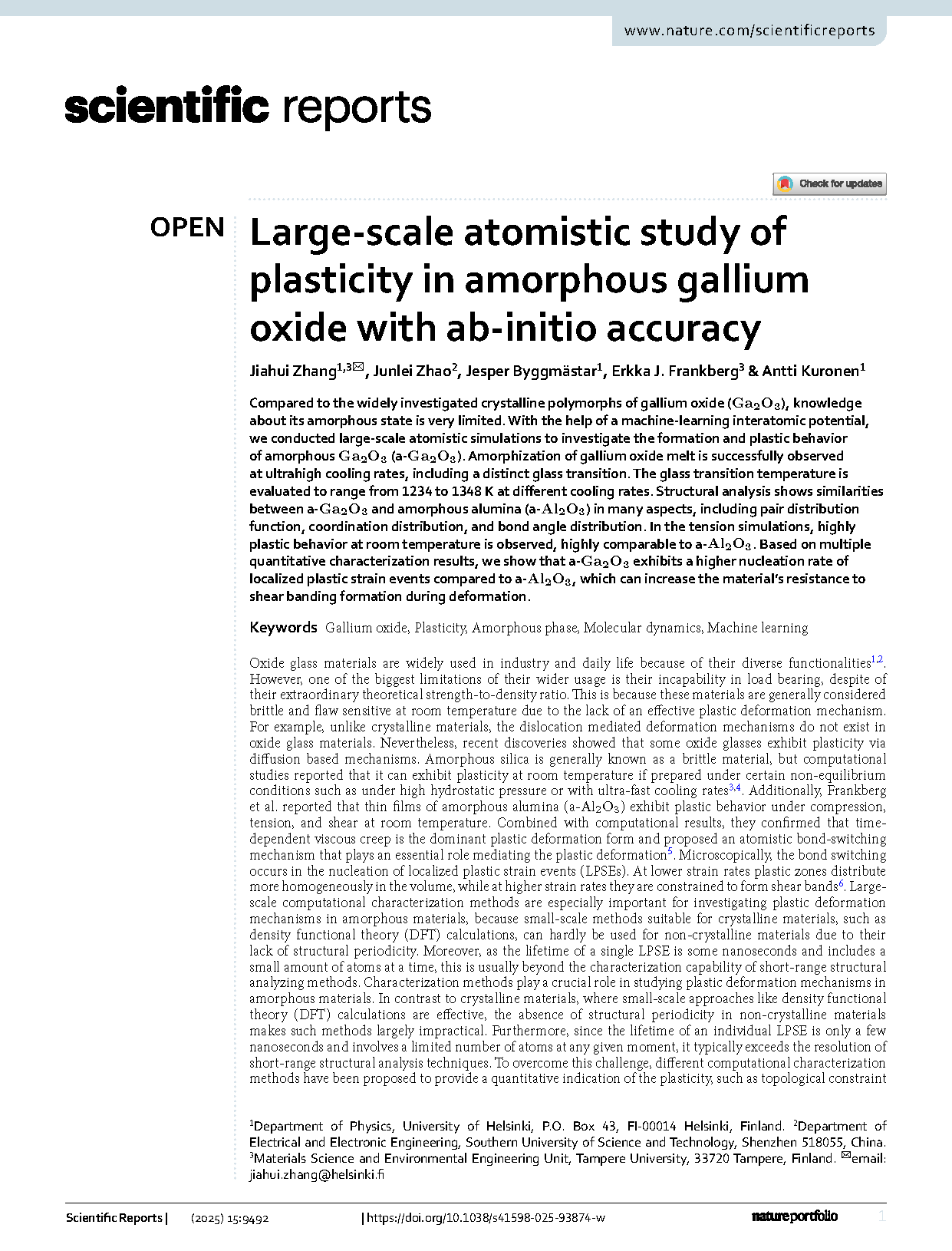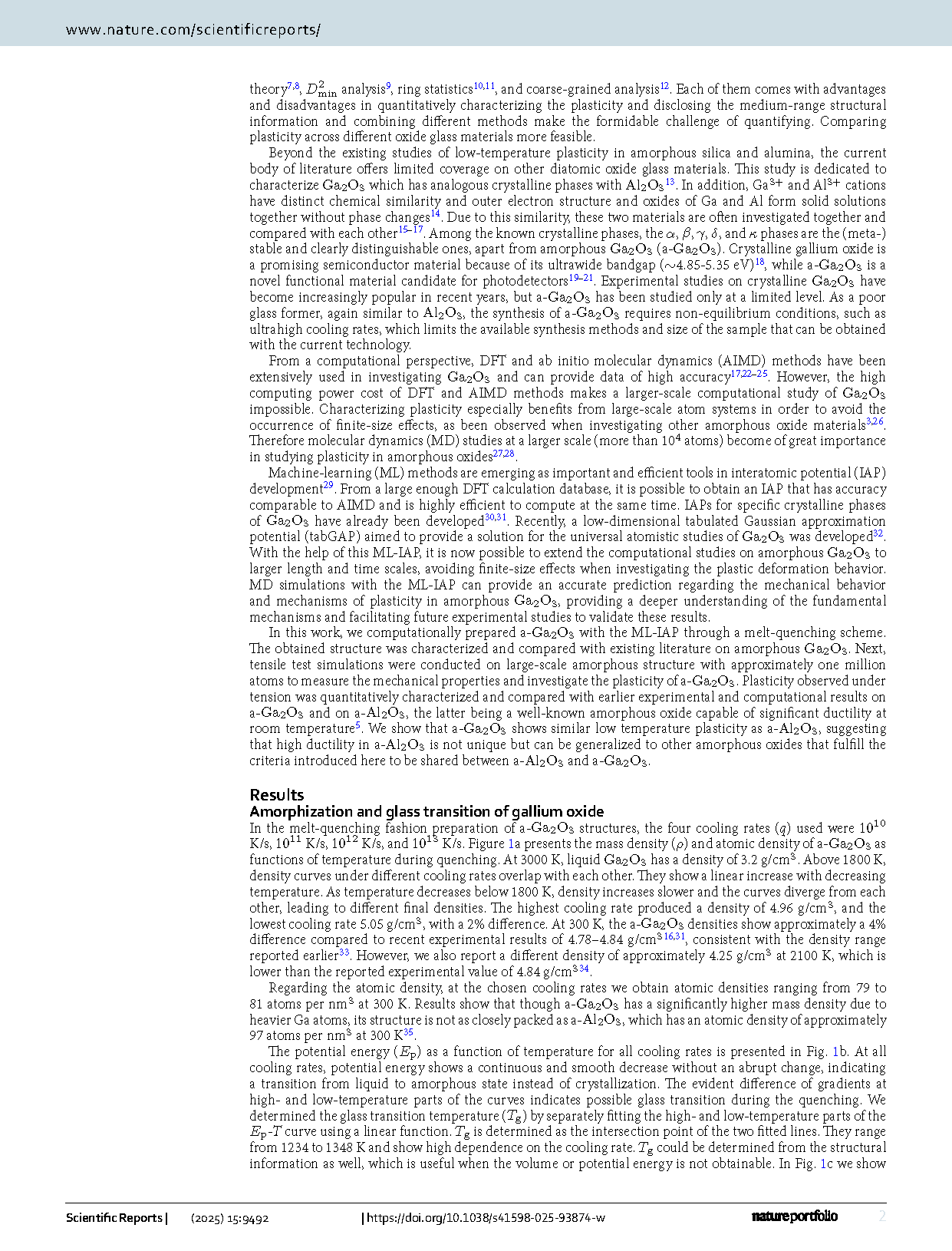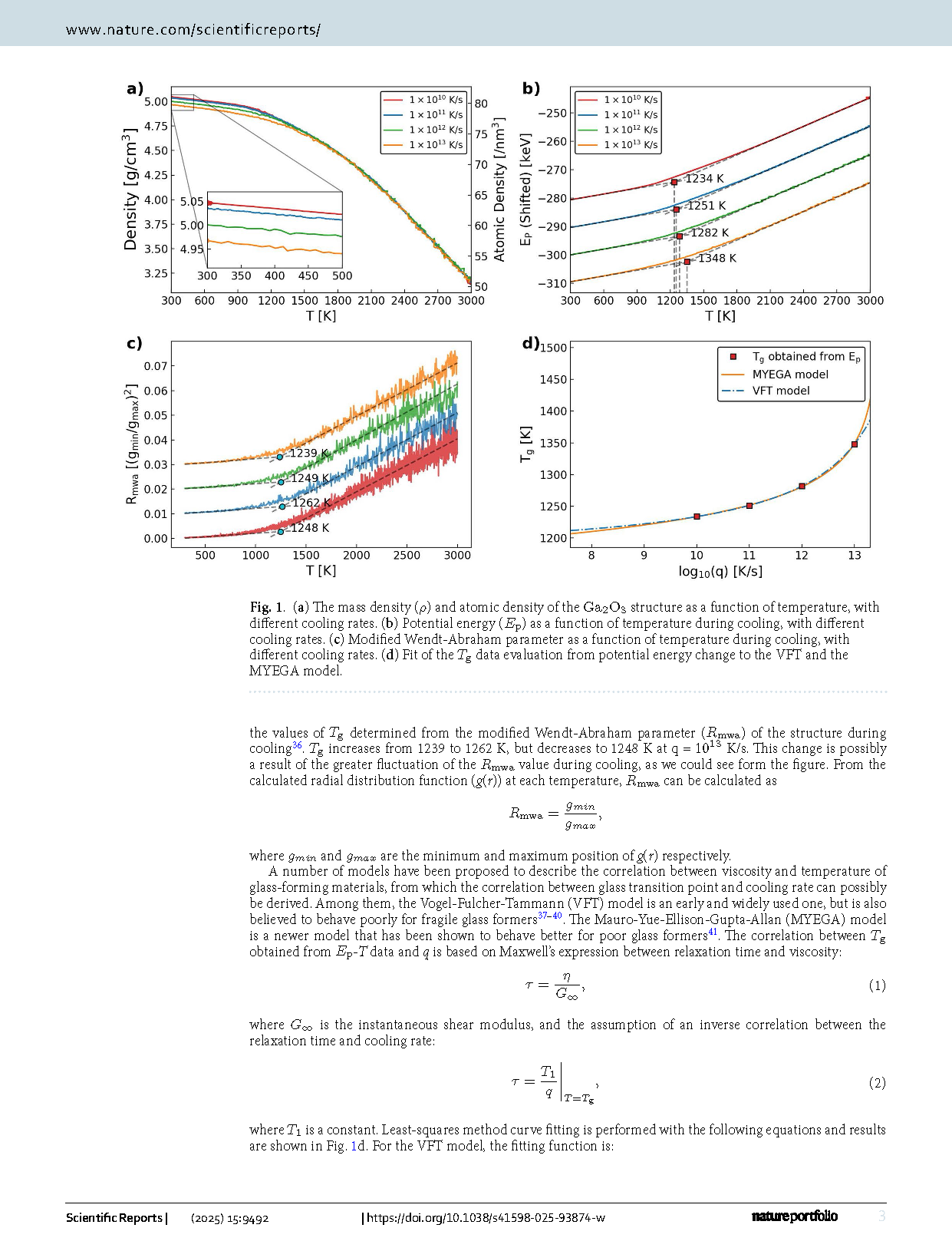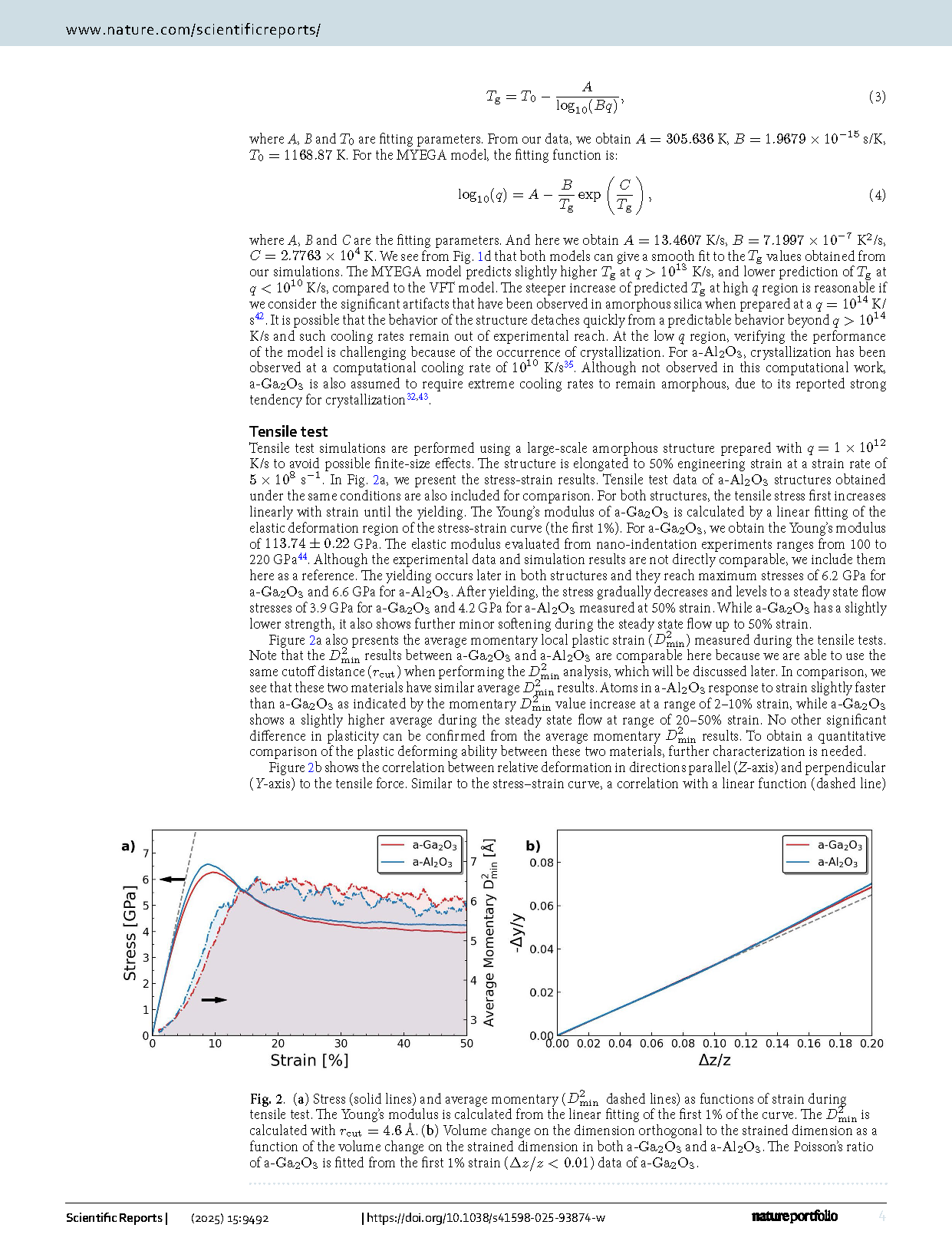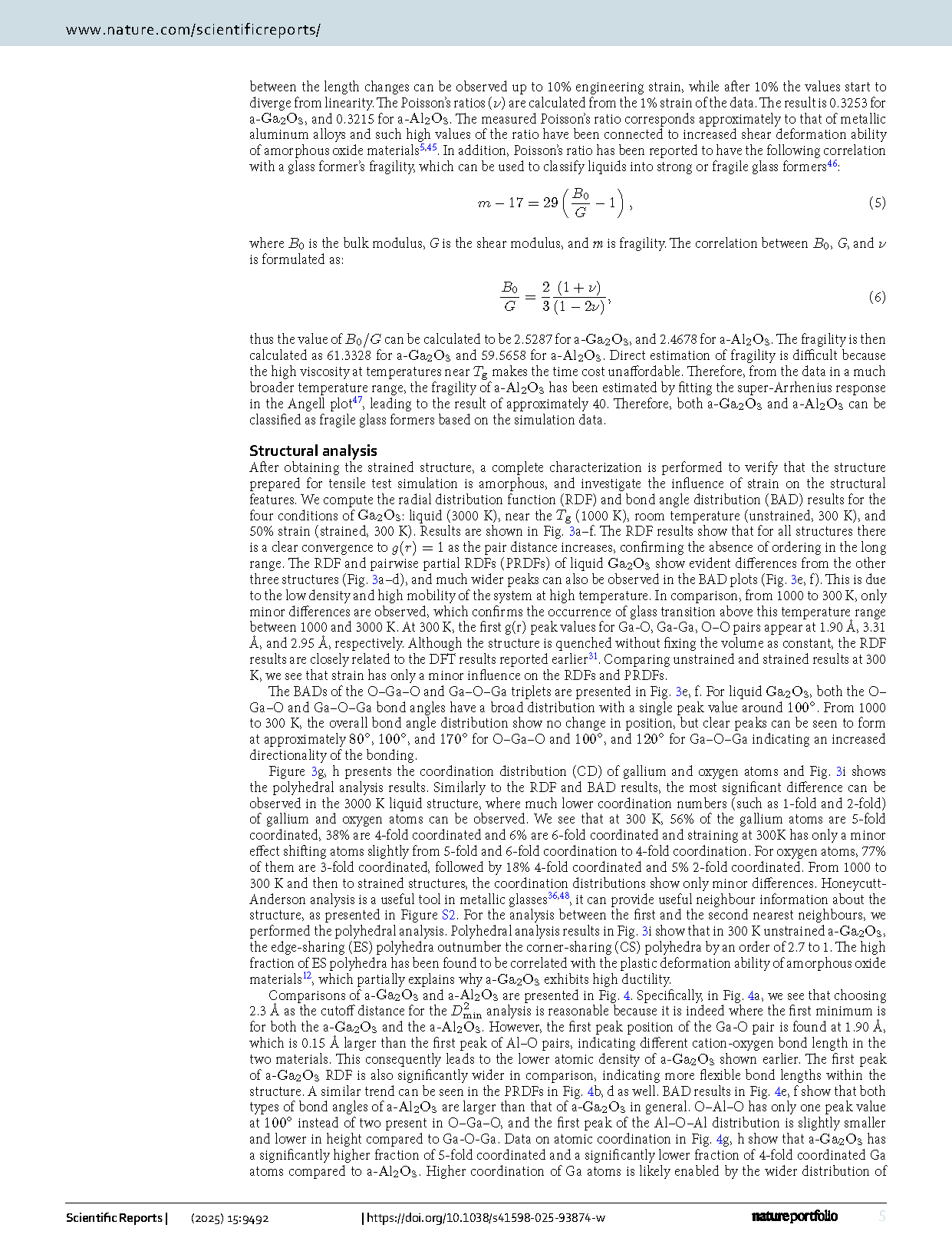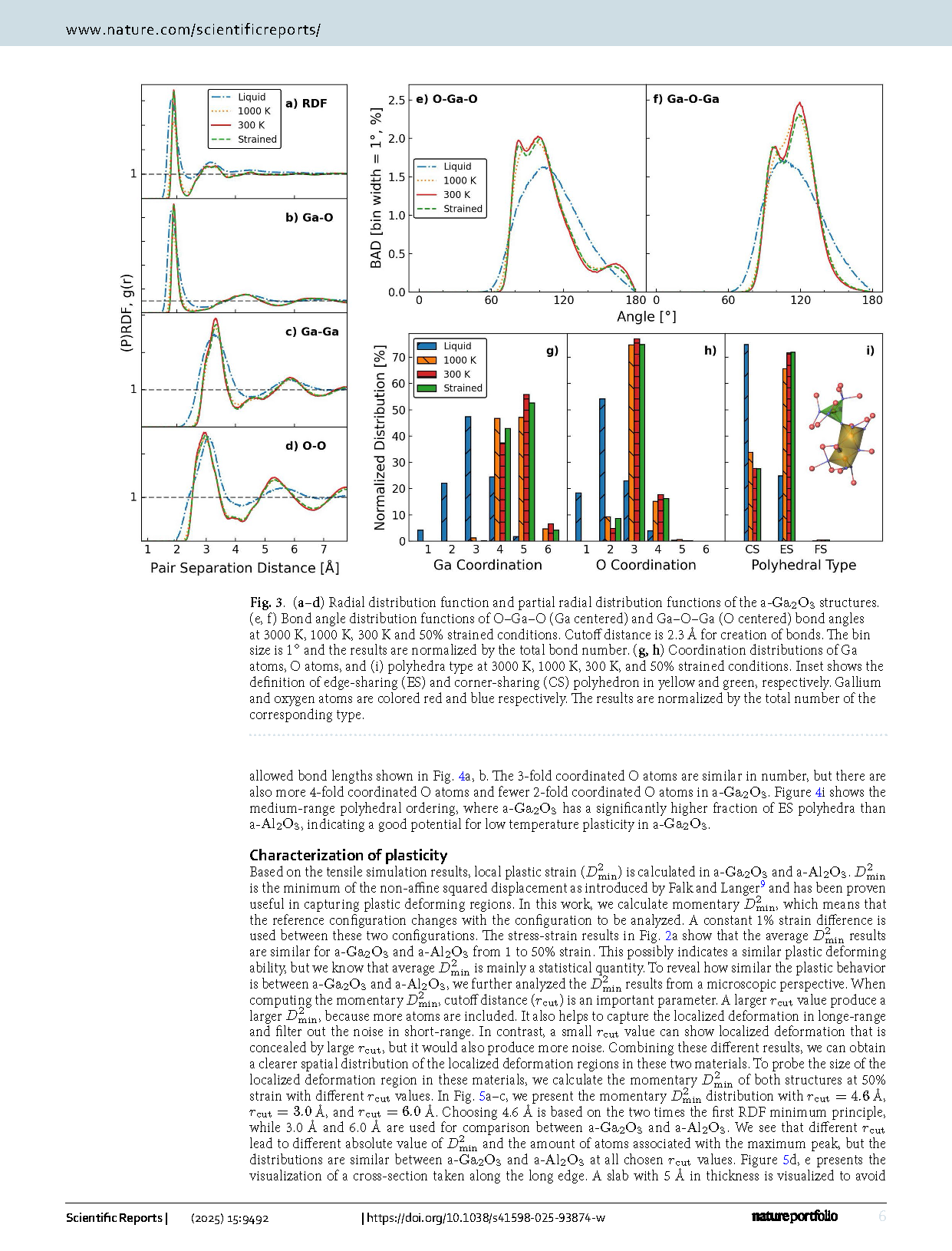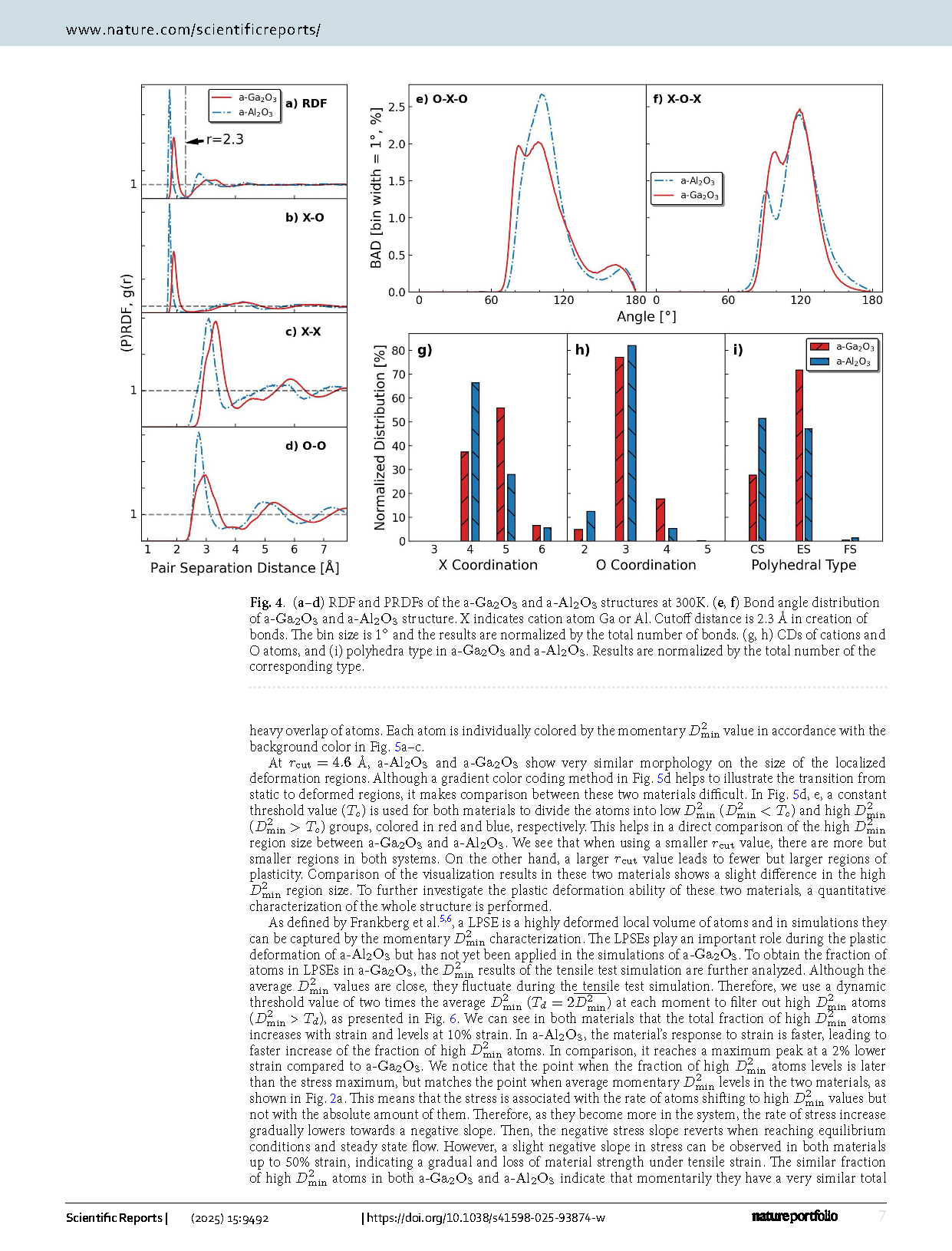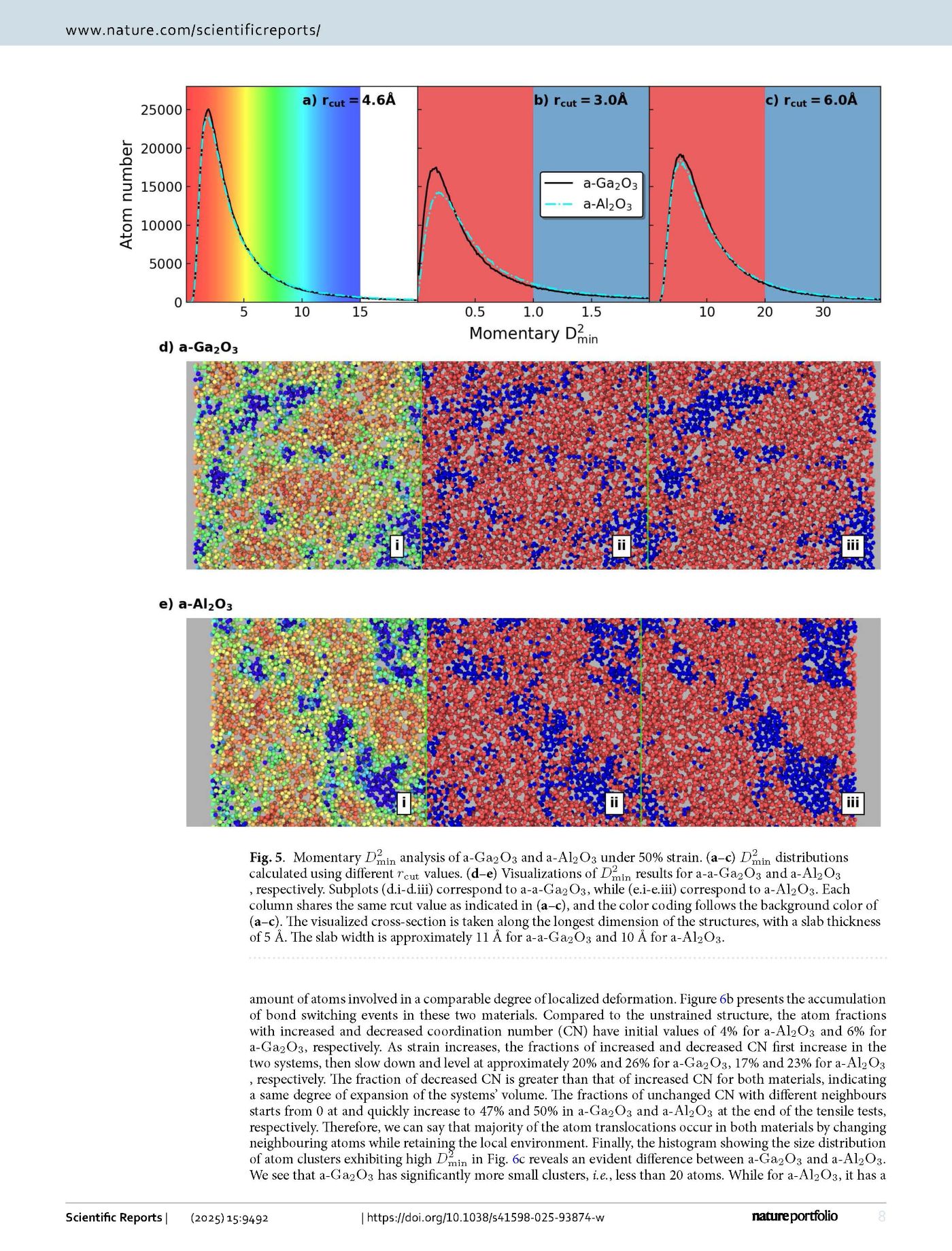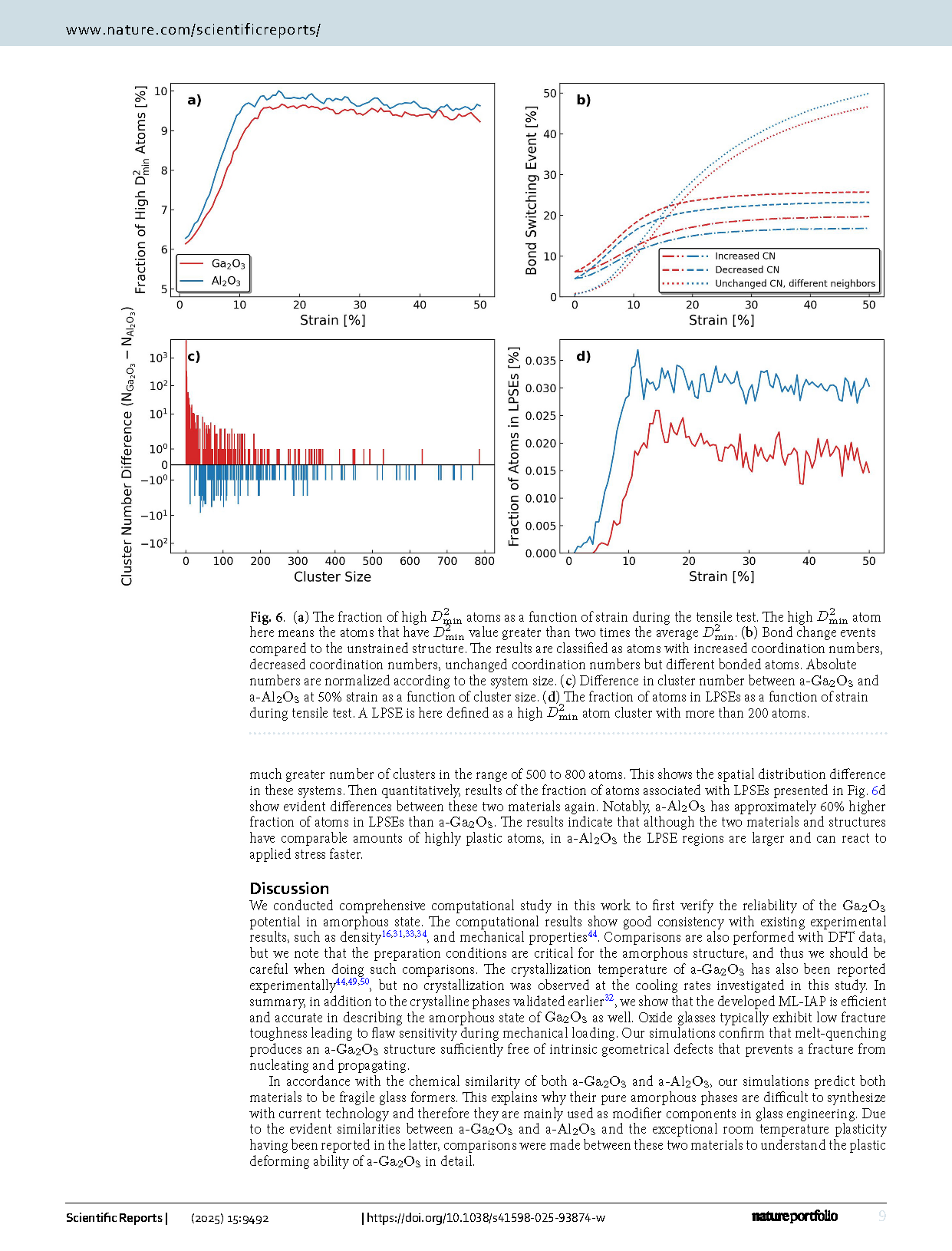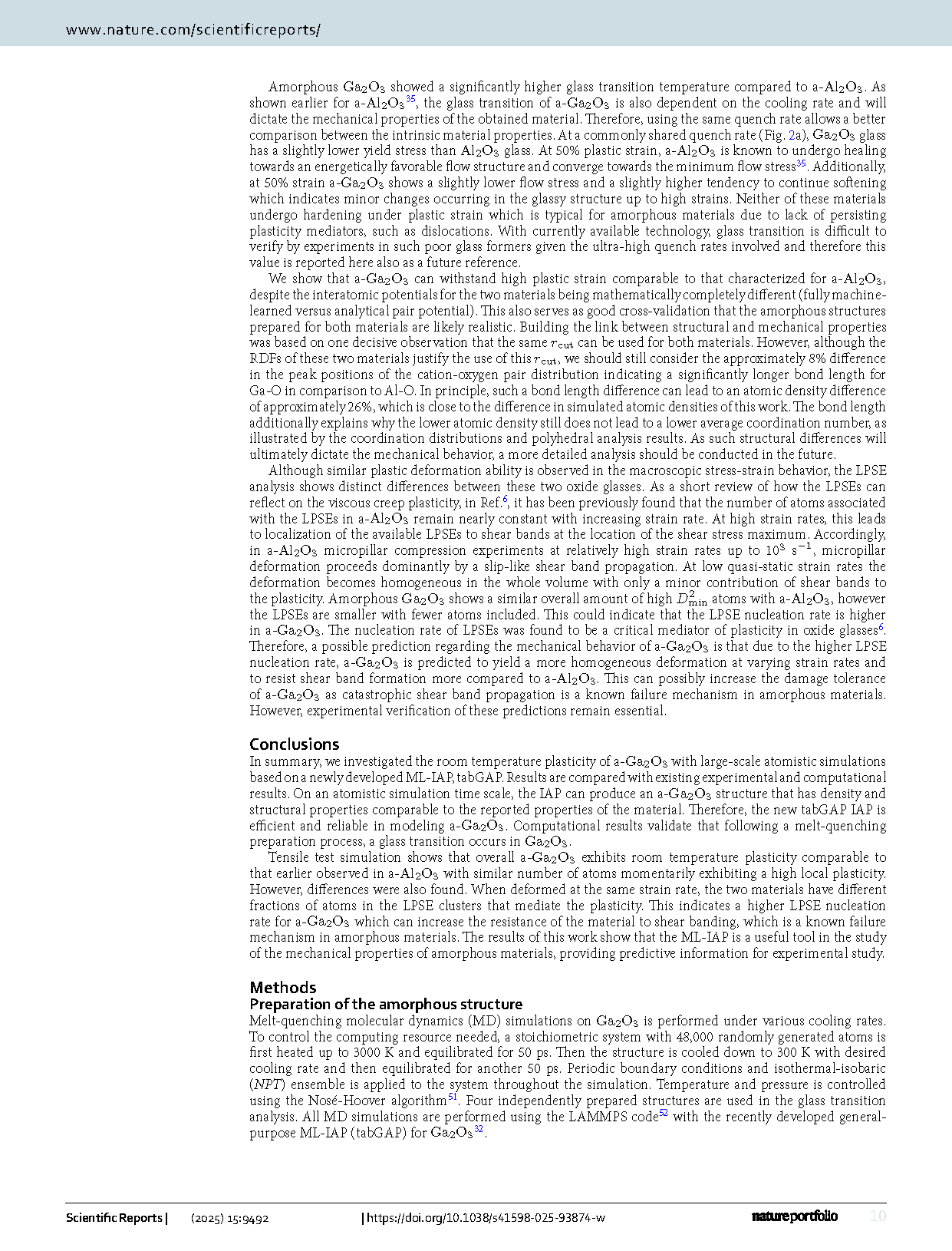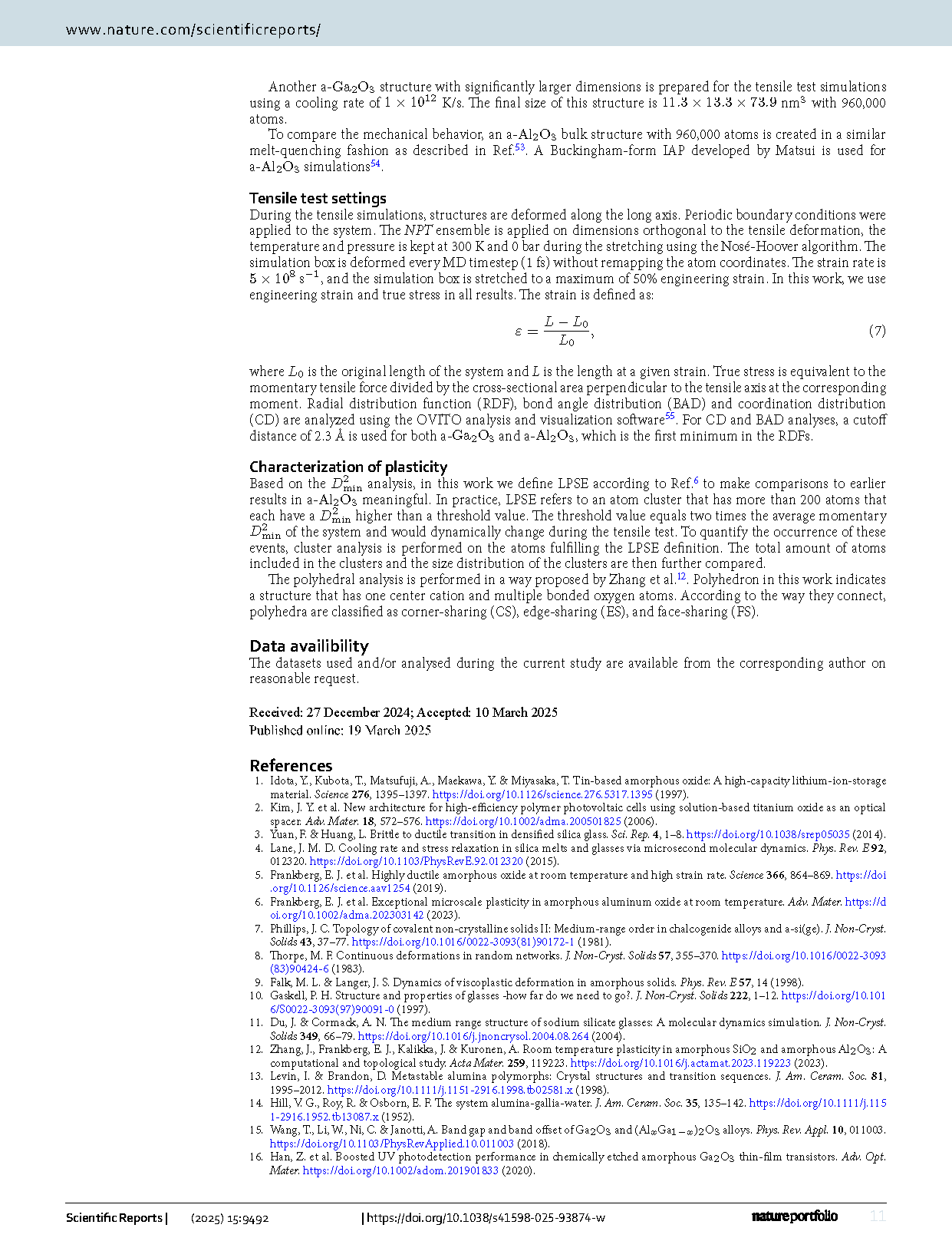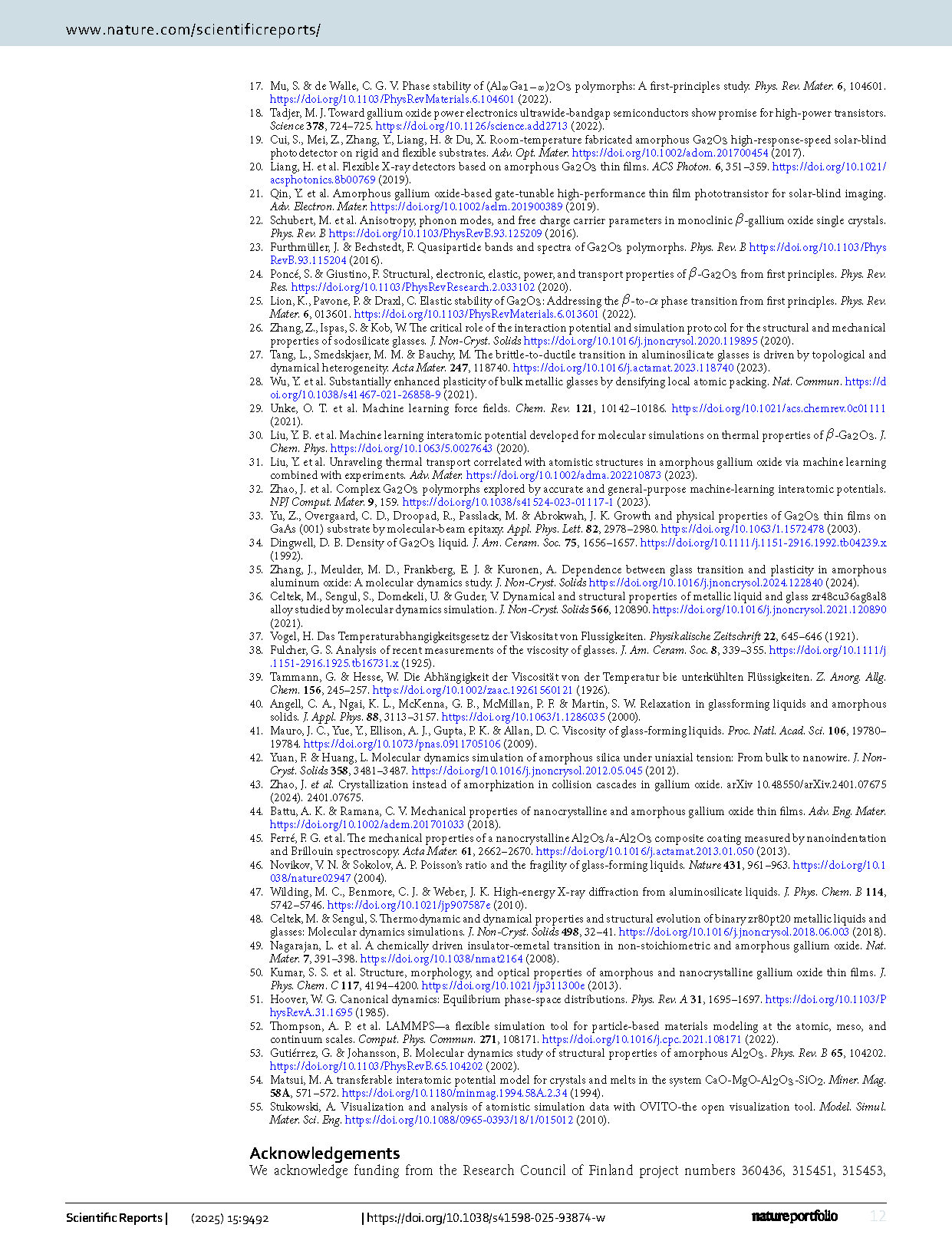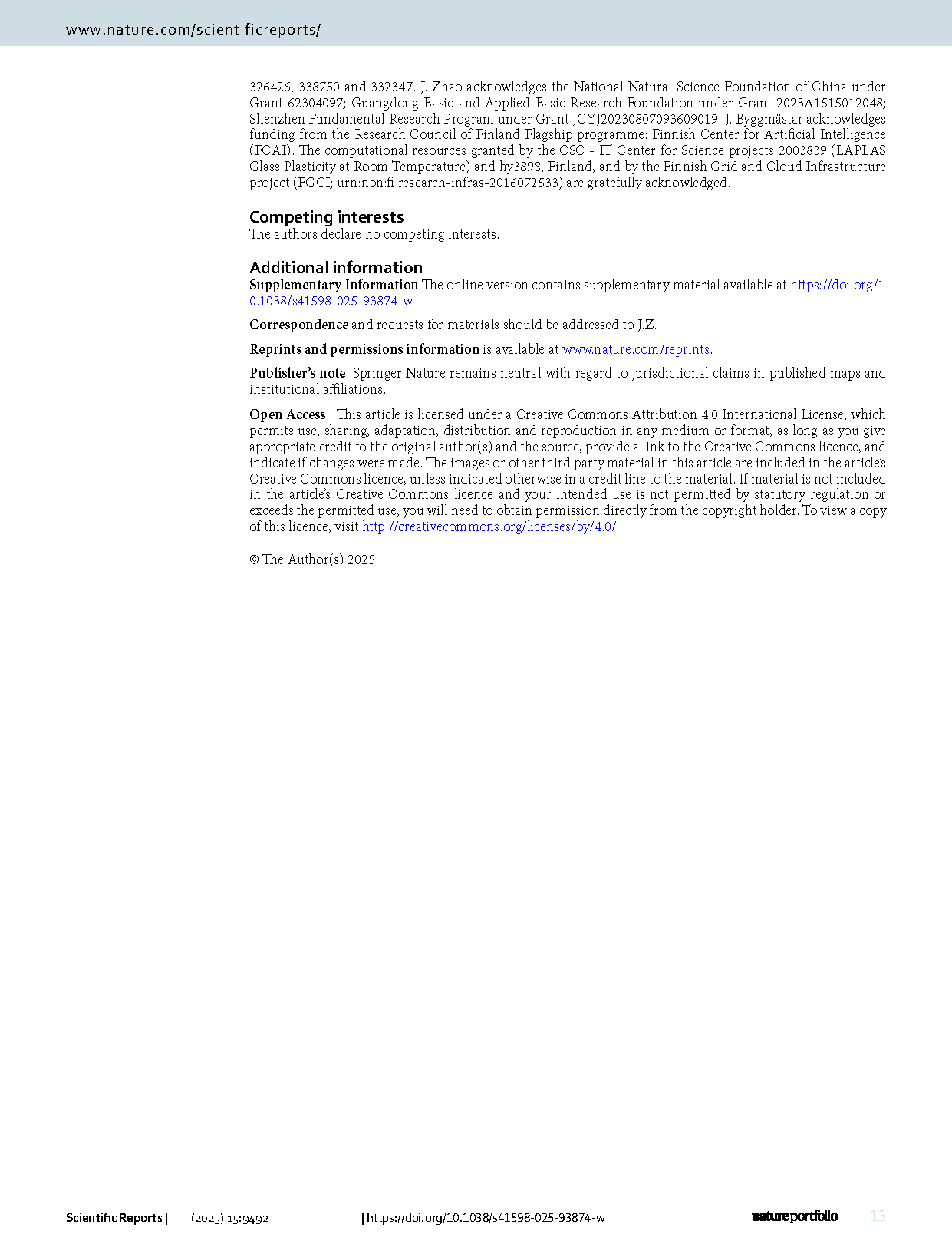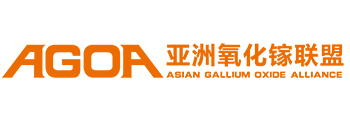

【International Papers】Large-scale atomistic study of plasticity in amorphous gallium oxide with ab-initio accuracy
日期:2025-04-13阅读:434
Researchers from the Tampere University have published a dissertation titled "Large-scale atomistic study of plasticity in amorphous gallium oxide with ab-initio accuracy" in scientific reports.
Acknowledgements
We acknowledge funding from the Research Council of Finland project numbers 360436, 315451, 315453, 326426, 338750 and 332347. J. Zhao acknowledges the National Natural Science Foundation of China under Grant 62304097; Guangdong Basic and Applied Basic Research Foundation under Grant 2023A1515012048; Shenzhen Fundamental Research Program under Grant JCYJ20230807093609019. J. Byggmästar acknowledges funding from the Research Council of Finland Flagship programme: Finnish Center for Artificial Intelligence (FCAI). The computational resources granted by the CSC - IT Center for Science projects 2003839 (LAPLAS Glass Plasticity at Room Temperature) and hy3898, Finland, and by the Finnish Grid and Cloud Infrastructure project (FGCI; urn:nbn:fi:research-infras-2016072533) are gratefully acknowledged.
Abstract
Compared to the widely investigated crystalline polymorphs of gallium oxide (Ga2O3), knowledge about its amorphous state is very limited. With the help of a machine-learning interatomic potential, we conducted large-scale atomistic simulations to investigate the formation and plastic behavior of amorphous Ga2O3 (a-Ga2O3). Amorphization of gallium oxide melt is successfully observed at ultrahigh cooling rates, including a distinct glass transition. The glass transition temperature is evaluated to range from 1234 to 1348 K at different cooling rates. Structural analysis shows similarities between a-Ga2O3 and amorphous alumina (a-Al2O3) in many aspects, including pair distribution function, coordination distribution, and bond angle distribution. In the tension simulations, highly plastic behavior at room temperature is observed, highly comparable to a-Al2O3. Based on multiple quantitative characterization results, we show that a-Ga2O3 exhibits a higher nucleation rate of localized plastic strain events compared to a-Al2O3, which can increase the material’s resistance to shear banding formation during deformation.
Conclusions
In summary, we investigated the room temperature plasticity of a-Ga2O3 with large-scale atomistic simulations based on a newly developed ML-IAP, tabGAP. Results are compared with existing experimental and computational results. On an atomistic simulation time scale, the IAP can produce an a-Ga2O3 structure that has density and structural properties comparable to the reported properties of the material. Therefore, the new tabGAP IAP is efficient and reliable in modeling a-Ga2O3. Computational results validate that following a melt-quenching preparation process, a glass transition occurs in Ga2O3.
Tensile test simulation shows that overall a-Ga2O3 exhibits room temperature plasticity comparable to that earlier observed in a-Al2O3 with similar number of atoms momentarily exhibiting a high local plasticity. However, differences were also found. When deformed at the same strain rate, the two materials have different fractions of atoms in the LPSE clusters that mediate the plasticity. This indicates a higher LPSE nucleation rate for a-Ga2O3 which can increase the resistance of the material to shear banding, which is a known failure mechanism in amorphous materials. The results of this work show that the ML-IAP is a useful tool in the study of the mechanical properties of amorphous materials, providing predictive information for experimental study.
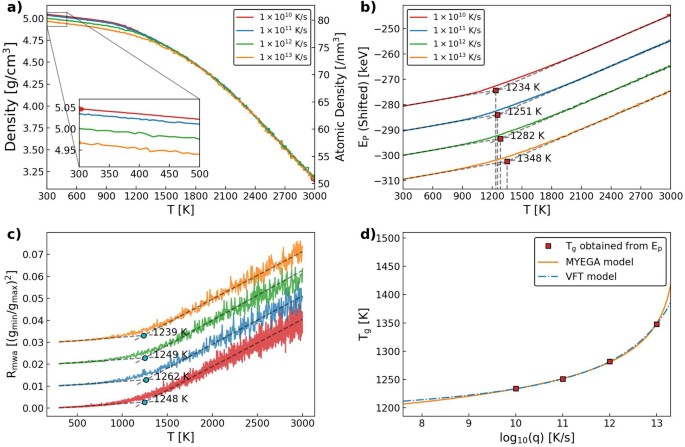
Fig. 1. (a) The mass density (ρ) and atomic density of the Ga2O3 structure as a function of temperature, with different cooling rates. (b) Potential energy (Ep) as a function of temperature during cooling, with different cooling rates. (c) Modified Wendt-Abraham parameter as a function of temperature during cooling, with different cooling rates. (d) Fit of the Tg data evaluation from potential energy change to the VFT and the MYEGA model.

Fig. 2. (a) Stress (solid lines) and average momentary (D2min dashed lines) as functions of strain during tensile test. The Young’s modulus is calculated from the linear fitting of the first 1% of the curve. The D2min is calculated with rcut=4.6 Å. (b) Volume change on the dimension orthogonal to the strained dimension as a function of the volume change on the strained dimension in both a-Ga2O3 and a-Al2O3. The Poisson’s ratio of a-Ga2O3 is fitted from the first 1% strain (Δz/z<0.01) data of a-Ga2O3.
DOI:
doi.org/10.1038/s41598-025-93874-w
